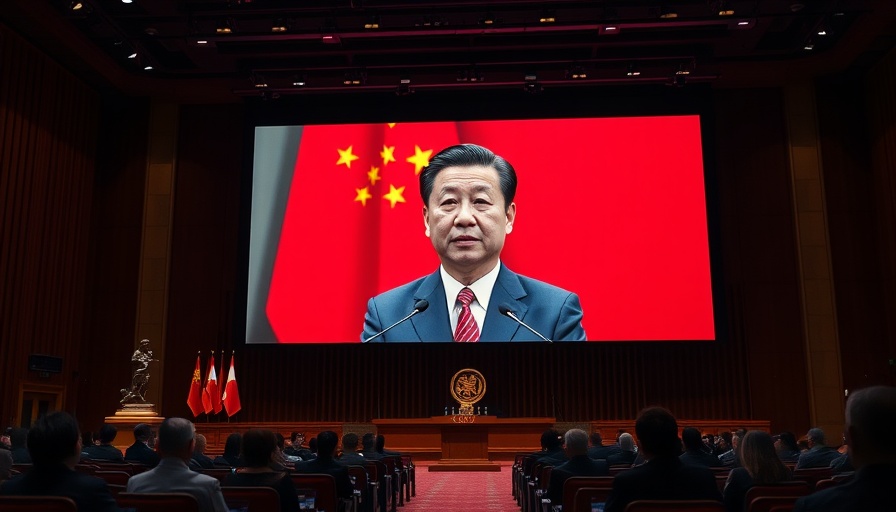
China's Green Ambitions: A Pioneering Path
In a significant stride towards sustainable development, China has firmly positioned itself as the frontrunner in the global clean energy transition. At the 2025 UN Climate Summit, President Xi Jinping outlined a climate action plan that aims to reduce greenhouse gas emissions by 7 to 10 percent by 2035. This ambitious commitment marks a shift from mere intentions, signifying China's transformation from a developing nation into a leader on the international climate stage. However, one must question: is this enough?
Assessing China's Emission Reduction Targets
The target, while a step forward, may seem modest against the backdrop of urgent climate action required globally. Skeptics, including Greenpeace's Yao Zhe, argue that such a goal does not sufficiently align with the Paris Agreement’s objective of limiting global warming to well below 2°C, emphasizing that a reduction of at least 30 percent is necessary to keep climate goals within reach. Nonetheless, China's approach could be analyzed as a cautious optimism; historically, the nation often sets conservative estimates but exceeds its environmental commitments, suggesting that the new emissions targets may serve as a baseline rather than a ceiling.
Renewable Energy Leadership
China's commitment to ramping up its renewable energy output is noteworthy. The plan includes ramping up wind and solar capacity to an astounding 3,600 gigawatts by 2035, a target that has historic precedence; China previously exceeded its solar and wind targets six years ahead of schedule. This growth in renewable capacity reflects both a domestic and global strategy aiming for energy independence and reduced reliance on fossil fuels.
Challenges and Opportunities Ahead
While commendable strides are made in renewables, China's dependence on coal remains a clear challenge. Despite government efforts and ambitious renewable targets, coal still accounted for a significant share of electricity generation in recent years. Observers are keenly aware that achieving real cuts in emissions is contingent upon transitioning away from coal and continuing to expand green technologies. This evolution is vital for China to stabilize its future energy supply while also contributing effectively to global climate goals.
What Lies Ahead in the Green Transition
With a projected peak in carbon emissions that could occur as early as 2025, the trajectory indicates a potential inflection point for China's energy policies. Nonetheless, external factors such as economic recovery post-COVID, energy demand fluctuations, and geopolitical tensions could complicate these ambitions. It remains to be seen whether China's historical trend of over-delivering will persist against this backdrop of uncertainty.
Conclusion: The Global Implications
China's efforts to lead in the clean energy transition carry implications far beyond its borders. As the world's largest emitter of greenhouse gases, China’s commitments are pivotal not just domestically, but for global climate stability. The outcome of China's initiatives will heavily influence international climate actions leading up to and beyond the anticipated COP30 summit in Brazil. Therefore, a watchful eye is warranted on China’s maneuvers as it strives to position itself not just as a leader in renewable energy, but also as a responsible global citizen in the fight against climate change.
 Add Row
Add Row  Add
Add 




Write A Comment